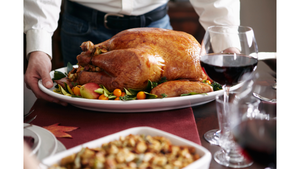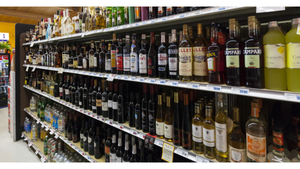ARTISAN CHEESE PROFITS HINGE ON STRONG SELL-THROUGH
LOUISVILLE, Ky. -- There's more to a best-selling cheese than taste, texture and history -- it still has to be sold effectively to consumers, according to a panel of present and past cheese retailers.While cheese makers are responsible for delivering a quality product, it's up to store operators and their staff to get it into the hands of passing shoppers, they said."Most people who come into my store
September 3, 2001
ROBERT VOSBURGH
LOUISVILLE, Ky. -- There's more to a best-selling cheese than taste, texture and history -- it still has to be sold effectively to consumers, according to a panel of present and past cheese retailers.
While cheese makers are responsible for delivering a quality product, it's up to store operators and their staff to get it into the hands of passing shoppers, they said.
"Most people who come into my store may not necessarily be interested in cheeses that are more expensive than they're used to buying," said Robert Morey, self-described "cheese guy" at New Pioneer Co-op, a general-service supermarket in Iowa City, Iowa. "It takes a lot of personal interaction between staff and customers. It requires getting the staff fired up about a product, and then passing that enthusiasm along to the shopper."
Quality, packaging, size, price, variety and origin all play a role in determining a best seller. But the store-level effort is made easier if the product comes with a marketing angle, according to Raymond Hook, manager of Star Provisions, Atlanta.
"We have a little philosophy in our store that every great product has a great story -- like a cheese made by a doctor," he said. "The products that sell the best are the ones I know the most about."
Ari Weinzweig, co-owner and founding partner of Zingerman's Delicatessen, Ann Arbor, Mich., said his experience in running one of the nation's better-known specialty delis has been to use the story to enhance the appeal of a particular cheese, and not as a substitute for quality.
"Good stories help us sell, but the sale has to be based on great flavor and history, and not just a story without substance," he said.
Hook, whose responsibilities also include overseeing Bacchanalia, Star Provision's wine shop, and the Floataway Cafe restaurant, noted that store associates need to possess as much knowledge as possible about a product -- in this case, cheeses -- to satisfy more avid consumer inquiries.
"There seems to be this trend about people wanting to know more about the origins of a product -- where they come from, who makes them and how fresh they are," he said. "If they're looking for something unique, they want to know why it's better and different."
High quality is indeed necessary to justify a higher price point, Weinzweig added. But here, it's important to remember not to stray far outside the bounds of what customers are used to.
"If the highest-priced cheese in your case is $15, you can't expect one to sell for $28," he said. "But, if you can get them from $15 to $18, and then $18 to $20, and then $20 to $24, that can work. You can't go too far, too fast, because the staff's not comfortable and they're scared of customers asking why it's so expensive over everything else."
Kristen Sande, formerly a cheese manager for Whole Foods Market, Austin, Texas, said one of the best tools retailers can use in overcoming the apprehension many consumers express in deciding whether to buy a pricier cheese is to get it into their mouths. Other promotional tools -- used in conjunction with a strong sampling program -- can help ensure a sale.
"One of the things I did while at Whole Foods was design tags mentioning certain cheeses were award winners," she recalled. "It created an interest, a lot of inquiries and demand, because now the product has clout."
Hook's experience has been that price is an easier barrier to overcome with artisan items like cheese, because the name already implies quality and premium status.
"Price is probably fifth on our list of priorities selling a product," he said. "These are handcrafted products and made on small farms, so there are many factors besides price that go into the sell."
New Pioneer Co-op's Morey agreed, saying that the upsell should stress raising the ceiling of expectation, and getting customers to open up a little more.
"It's what I call Affirmative Action selling," he said. "I'll take a lower margin on cheeses that I really believe in, rather than a mass-produced French brie that I can mark up more significantly. The reason I can take a hit on those artisanal cheeses is because I've got customers who are willing to pay for that item. It balances out in the end."
Weinzweig added that it's important to first explain price strategies to associates, so they can justify the point to skeptical customers. In short, the people on staff also need to develop a passion for the cheese.
"It helps the customer get a handle on the product, which I think is the key, because it's all scary to them," he said. "Most people didn't grow up on sheep's milk or $20-a-pound cheese, so it's uncomfortable for them. If we can give them some context that puts their mind at ease, all the better."
Hook said selling artisan cheeses has become even more fun in recent years as the number of American products has increased in number and in quality. He noted that for every 30 cheeses on average he rotates into his inventory each month, at least five are American in origin.
"It's really encouraging to see more American artisan cheeses being made, that are definitive to their region and that capitalize on the flavors and history of their area," he said. "It's even nicer that we're making cheeses that are not European copycats."
About the Author
You May Also Like




